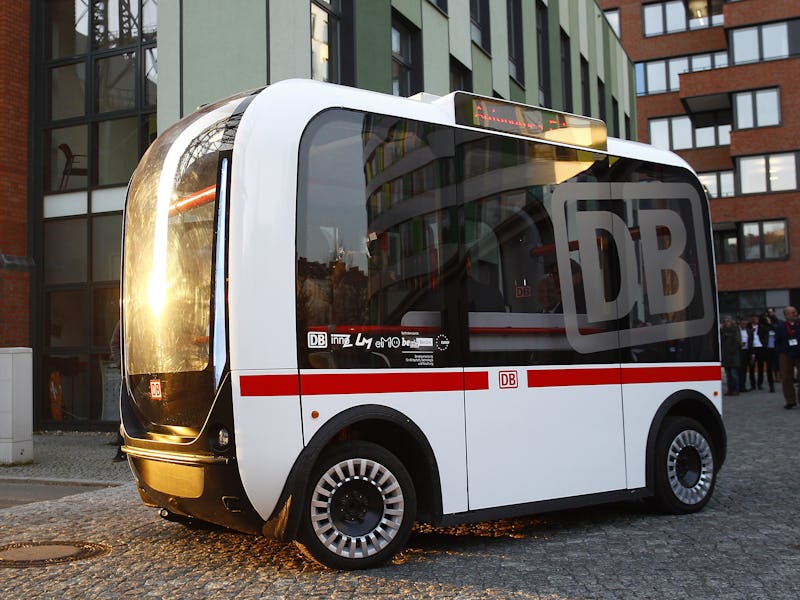This Self-Driving German Bus is Biggest Step Yet to Our Driverless Future
Driverless public transit is here.

If you’ve been awaiting your first driverless bus commute, you’ll have to head to Germany and test it out.
This week, Germany tested out its first automotive bus within Deutsche Bahn (DB), its national public transport system.
The electric vehicle drove its inaugural passengers in a Bavarian town on an eight-minute pre-programmed route through town, arriving at the town center’s railway station. The six-seater — with room for six more standing — bus is free to ride and can go up to 25 miles per hour, though it’s currently limited to about 10 miles per hour for safety measures.
Because the bus can’t avoid road obstacles on its own yet, a human instantly take take control of the bus’ nonexistent wheel via a joystick.
The EZ10’s free fare implies that Germany’s driverless bus pilot test is still in beta, given that among the first riders was head of Deutsche Bahn Richard Lutz, who announced: “We’ve just driven, completely autonomously, into a new era of transport.”
Starting in 2018, the bus will operate more test routes in other German towns and cities, which include the country’s second-largest city, Hamburg.
It seems 2017 may be the breakthrough year of driverless buses. Earlier this year, heavy-duty electric transportation maker Poterra announced the first autonomous bus program in the U.S. in partnership with the University of Nevada, Reno, along with local municipalities.
But while private companies have been on top of the driverless trend for some time, it’s less certain when U.S. cities and states will be active partners in bringing autonomous cars into their public transit systems, as Germany’s done.
If you liked this article, check out this video on five reasons to get excited about self-driving cars.